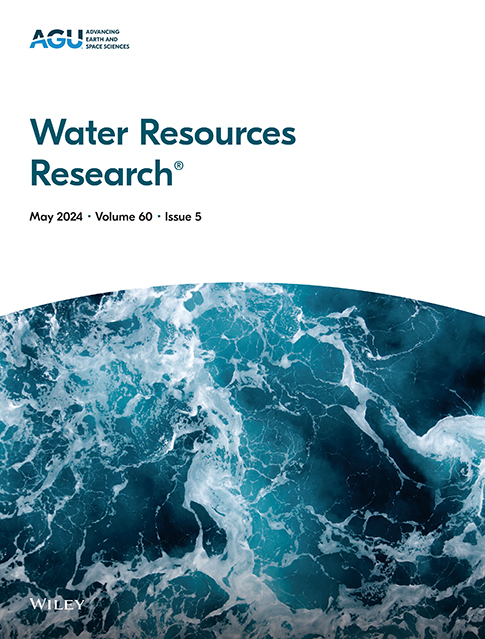Hydrological Connectivity of Distributary-Confluence Geomorphic Unit: A Case Study of H-Shaped Features Within River Networks
IF 4.6
1区 地球科学
Q2 ENVIRONMENTAL SCIENCES
引用次数: 0
Abstract
The H-shaped feature, characterized by a single connecting channel (CC) linking two inflows, is a common geomorphological unit in delta river networks. This structure plays a critical role in redistributing upstream flows, affecting the hydrological connectivity of the network. Despite previous studies on geometric structures and flow distribution, the mechanisms influencing hydrological connectivity remain poorly understood due to the complex structure of deltas and the interactions among various controlling factors. This study investigates the flow distribution and hydrological connectivity of H-shaped structures using numerical simulations and graph theory. Results indicate that, in H-shaped structures, the gravitational pressure caused by variations in Upstream Discharge Ratios (UDR) and CC topography generates uneven spatial velocity fields, resulting in different levels of diversion capacity in the CC. The hydrological connectivity indexes of the distributary subnetwork increase with the growing diversion capacity of the CC, whereas the confluence subnetwork exhibits the opposite trend. The CC's influence on downstream flow regulation and hydrological connectivity is influenced by the structure itself. Enhanced CC diversion capacity in H-shaped structures balances flow distribution and strengthens system resilience. The study emphasizes that simpler river network topologies concentrate flows in fewer channels while maintaining strong subnetwork exchanges, while complex networks distribute flows broadly but reduce inter-subnetwork connectivity. Therefore, we recommend that deltaic river network management consider their topological characteristics and implement strategies such as constructing additional CC or modifying existing channel topography to enhance flow exchange capacity. These findings offer valuable insights for global management and conservation of deltaic river networks.汇合流-分流地貌单元的水文连通性:以河网h形特征为例
h形地貌是三角洲河网中常见的地貌单元,其特征是由一条连接河道(CC)连接两个流入。这种结构对上游水流的再分配起着至关重要的作用,影响着网络的水文连通性。尽管前人对三角洲的几何结构和水流分布进行了研究,但由于三角洲结构复杂,各种控制因素之间的相互作用,对水文连通性的影响机制知之甚少。本文采用数值模拟和图论方法研究了h型构筑物的水流分布和水文连通性。结果表明:在h型构筑物中,由于上游流量比(UDR)和CC地形变化所引起的重力压力导致空间速度场不均匀,导致CC内导流能力不同,且随着CC导流能力的增大,分流子网络的水文连通性指数增大,而汇流子网络则相反。CC对下游流量调节和水文连通性的影响受结构本身的影响。h型结构的CC导流能力增强,平衡了水流分布,增强了系统弹性。该研究强调,简单的河网拓扑结构将流量集中在较少的通道中,同时保持强大的子网交换,而复杂的河网拓扑结构将流量广泛分布,但降低了子网间的连通性。因此,我们建议三角洲河网管理考虑其拓扑特征,并实施诸如建设额外的CC或修改现有河道地形等策略,以增强水流交换能力。这些发现为全球三角洲河网的管理和保护提供了有价值的见解。
本文章由计算机程序翻译,如有差异,请以英文原文为准。
求助全文
约1分钟内获得全文
求助全文
来源期刊

Water Resources Research
环境科学-湖沼学
CiteScore
8.80
自引率
13.00%
发文量
599
审稿时长
3.5 months
期刊介绍:
Water Resources Research (WRR) is an interdisciplinary journal that focuses on hydrology and water resources. It publishes original research in the natural and social sciences of water. It emphasizes the role of water in the Earth system, including physical, chemical, biological, and ecological processes in water resources research and management, including social, policy, and public health implications. It encompasses observational, experimental, theoretical, analytical, numerical, and data-driven approaches that advance the science of water and its management. Submissions are evaluated for their novelty, accuracy, significance, and broader implications of the findings.
 求助内容:
求助内容: 应助结果提醒方式:
应助结果提醒方式:


